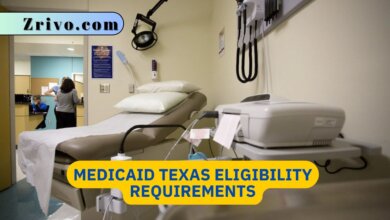Health Coverage Tax Credit 2023 - 2024
The Health Coverage Tax Credit, HCTC for short, is a tax credit that lowers marketplace coverage premiums. This article covers HCTC, its eligibility requirements, and the application.

The Health Coverage Tax Credit (HCTC) is refundable, meaning it can be used to reduce taxes at tax time. The credits can only be claimed when purchasing a plan through the Marketplace or federally facilitated exchange. Marketplace plans are offered in four “metal” levels of coverage: bronze, silver, gold, and platinum. The credit is based on household income, and the amount that is available can vary depending on several factors, including family size, state of residence, cost of the lowest-cost silver plan, and the individual’s actual and adjusted gross income.
The credit is available to people with a household income between 100% and 400% of the federal poverty level who enroll through the health insurance marketplace. It is not available to individuals whose household income is higher than the thresholds or those with an employer-sponsored or Medicare Advantage plan. The credit is applied against the premium paid for the second-lowest-cost silver or benchmark plan in the health insurance marketplace. It can also be applied to cost-sharing reduction payments, which reduce a person’s out-of-pocket costs, such as copayments and Medicare deductibles, for the benchmark plan or other lower-cost plans.

Who is Eligible for HCTC?
To determine a person’s health coverage tax credit eligibility, the IRS uses the individual’s actual household income, as reported on the Federal Return Tax Form TC-40A, Part 3, line 10, or TC-40A, Part 4, line 8. This includes all taxable wages and salaries, self-employment income, pension and annuity income, social security benefits, interest and dividends, and other taxable income. However, the credit cannot be used to pay for premiums for Catastrophic health plans, which are offered in the marketplace and offer lower premiums and cost-sharing than bronze plan levels, or to cover costs associated with abortion services.
The health coverage tax credit can be claimed on either the annual Federal Income Tax Return or by choosing advance payment, provided to a person throughout the year and applied to monthly premiums. The advance payment amount is reconciled against the amount claimed on a person’s federal tax return the following spring. Individuals and families must enroll in a marketplace plan through their state’s health insurance exchange to be eligible for the credit.
You can use a simple tax credit calculator to see if you’re eligible for financial help to pay your Marketplace health plan premium. This tool takes into account your household income, family size, and location and will provide you with a range of possible subsidies to help cover your monthly costs. To complete this calculator, you must know your approximate gross income (MAGI) for the year.
Note that financial help is only available through the Marketplace and can be used to cover either your monthly premium or out-of-pocket costs. To qualify for premium tax credits, you must apply through the marketplace and provide proof of your estimated income and household size. You’ll also need to report any changes to your income or household size during the year to avoid surprises at tax time.
The ACA requires that the premium tax credit can’t be used to pay for a Marketplace plan that does not offer the essential health benefits required under the law, such as maternity care or pediatric dental coverage. In addition, the credit cannot be applied to a Marketplace plan premium that is attributable to a benefit that is not considered an essential health benefit, such as adult dental coverage or prescription drug benefits.





